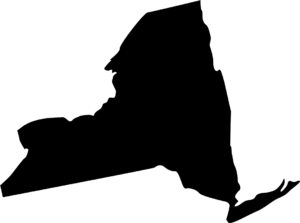

How the U.S. Government Decides Who is In Poverty and Why That Method Is Flawed
Digital Briefs
June 13, 2019
A recent policy proposal is seeking to change the way the Federal Poverty Level (FPL) is measured. The proposed change would lower the already low income- eligibility cutoffs for federal programs, such as Medicaid, CHIP, and SNAP,reducing or eliminating assistance for many individuals and families.
This means many New Yorkers who are currently considered poor would no longer qualify to participate in these public assistance programs.
AS IT IS NOW:
- Close to one million New York City children are covered by Medicaid
- 1.6 million individuals in New York City receive SNAP
- More than 60,000 children receive childcare through vouchers
The Trump administration’s proposal to alter the FPL would mean many families who rely on these and other important programs would no longer be eligible for them.
Read more about the proposed change to FPL and how how you can help.
DID YOU KNOW:
THE WAY THE U.S. FEDERAL GOVERNMENT DETERMINES HOW MANY PEOPLE LIVE IN POVERTY IS BASED ON THE PRICE OF FOOD IN 1955?
The Department of Agriculture’s 1955 Household Food Consumption Survey determined that families of three or more spent about one-third of their after-tax income on food. The poverty threshold was then created, which set poverty as three times the cost of the Economy Food Plan.
Since then, this measure has been updated yearly based on the Consumer Price Index, which considers price changes and inflation in the economy, but does not consider changes in the general standard of living.
Additionally, this measure fails to take into account the cost of necessities like child care, transportation, and taxes into account.
This measure of income is used by the U.S. Government to determine who is eligible for subsidies, benefits, and programs such as SNAP, Medicaid, Headstart, and CHIP.
These guidelines are the same across the nation and do not consider the vast differences in the cost of living between states.

Median Gross Rent in Arkansas State
$711

Median Gross Rent in New York State
$1,226
ACCORDING TO THE CURRENT MEASURE
![]()
A family of four needs to earn less than $25,750 a year to meet the federal poverty threshold. This is $2,146 a month.
NEW YORKERS STRUGGLE WITH HIGH COST OF LIVING
The median gross rent in NYC is $1,379 a month. The average New Yorker spends 31.7% of their income on rent.
The average annual cost of infant care in New York State is $14,144—that’s $1,179 per month.
The average annual cost of food in the New York metropolitan area is $7,689, which is $640 a month.
The price of an unlimited, monthly MetroCard is $1,524 a year, or $127 a month.
The Bottom Line
The poverty line is already below what is needed to raise a family, and the Trump Administration’s proposal puts at risk the livelihoods of thousands of New Yorkers by limiting their access to critical assistance programs. Read more about the proposal here.
SOURCES:
Citizens’ Committee for Children of New York. Keeping Track Online Database: Children Covered by Medicaid, SNAP (Food Stamps), Child Care Voucher Utilization for All Children. https://data.cccnewyork.org/
U.S. Census Bureau, American Community Survey 1-Year Estimates, Tables B25064, B25070, B25071
Assistant Secretary for Planning and Evaluation (ASPE), Poverty Guidelines.
Economic Policy Institute, Child Care Costs in the United States – New York. https://www.epi.org/child-care-costs-in-the-united-states/#/NY
Bureau of Labor Statistics, Consumer Expenditures for the New York Metropolitan Area: 2016-2017, Table 3004. https://www.bls.gov/regions/new-york-new-jersey/news-release/consumerexpenditures_newyorkarea.htm


